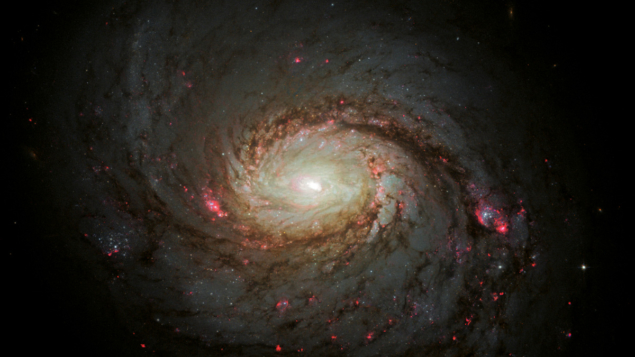
Highly energetic cosmic rays reach Earth from all directions and at all times, yet it has been challenging to conclusively identify their sources. Being charged, cosmic rays are easily deflected by interstellar magnetic fields during their propagation and thereby lose any information about where they originated from. On the other hand, highly energetic photons and neutrinos remain undeflected. Observations of high-energy photons and neutrinos are therefore crucial clues towards unravelling the mystery of cosmic-ray sources and accelerators.
Four years ago, the IceCube collaboration announced the identification of the blazar TXS 0506+056 as a source of high-energy cosmic neutrinos, the first of its kind (CERN Courier September 2018 p7). This was one of the early examples of multi-messenger astronomy wherein a high-energy neutrino event detected by IceCube, which was coincident in direction and time with a gamma-ray flare from the blazar, prompted an investigation into this object as a potential astrophysical neutrino source.
Point source
In the following years, IceCube made a full-sky scan for point-like neutrino sources, and in 2020, the collaboration found an excess coincident with the Seyfert II galaxy, NGC1068, that was inconsistent with a background-only hypothesis. However, with a statistical significance of only 2.9σ, it was insufficient to claim a detection. In November 2022, after a more detailed analysis with a longer live-time and improved methodologies, the collaboration confirmed NGC1068 to be a point source of high-energy neutrinos at a significance of 4.2σ.
IceCube’s measurements usher in a new era of neutrino astronomy
Messier 77, also known as the Squid Galaxy or NGC1068, is located 47 million light years away in the constellation Cetus and was discovered in 1780. Today, we know it to be an active galaxy: at its centre lies an active galactic nucleus (AGN), which is a luminous and compact region powered by a super massive black hole (SMBH), surrounded by an accretion disk. Specifically, it is a Seyfert II galaxy, which is an active galaxy that is viewed edge-on, with the line-of-sight passing through the accretion region that obscures the centre.
The latest search used data from the fully completed IceCube detector. Several calibrations and alignments were also made to the data-acquisition procedure and an advanced event reconstruction algorithm was deployed. The search was conducted in the Northern Hemisphere of the sky, i.e. by detecting neutrinos from “below”, so that Earth could screen background atmospheric muons.
Three different searches were carried out to locate possible point-like neutrino sources. The first involved scanning the sky for a statistically significant excess over background, while the other two used a catalogue of 110 sources that was developed in the 2020 study, the difference between the two being the statistical methods used. The results showed an excess of 79+22–20 muon–neutrino events, with the main contribution coming from neutrinos in the energy range of 1.5 to 15 TeV, while the all-flavour flux is expected to be a factor of three higher. All the events contributing to the excess were well-reconstructed within the detector, with no signs of anomalies, and the results were found not to be dominated by just one or a few individual events. The results were also in line with phenomenological models that predict the production of neutrinos and gamma rays in sources such as NGC1068.
IceCube’s measurements usher in a new era of neutrino astronomy and take researchers a step closer to understanding not only the origin of high-energy cosmic rays but also the immense power of massive black holes, such as the one residing inside NGC1068.
Further reading
IceCube Collab. 2022 Science 378 538.
M G Aartsen et al. 2020 Phys. Rev. Lett. 124 051103.





